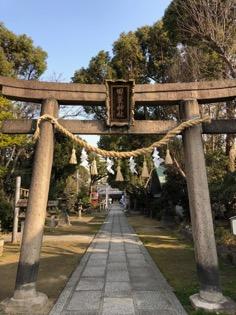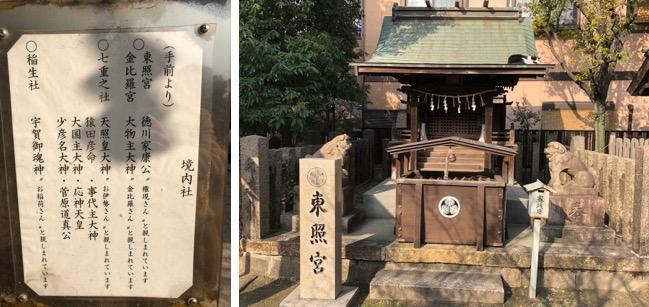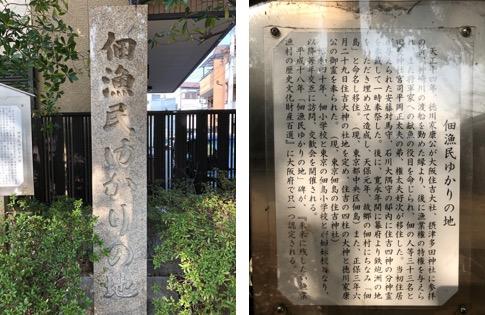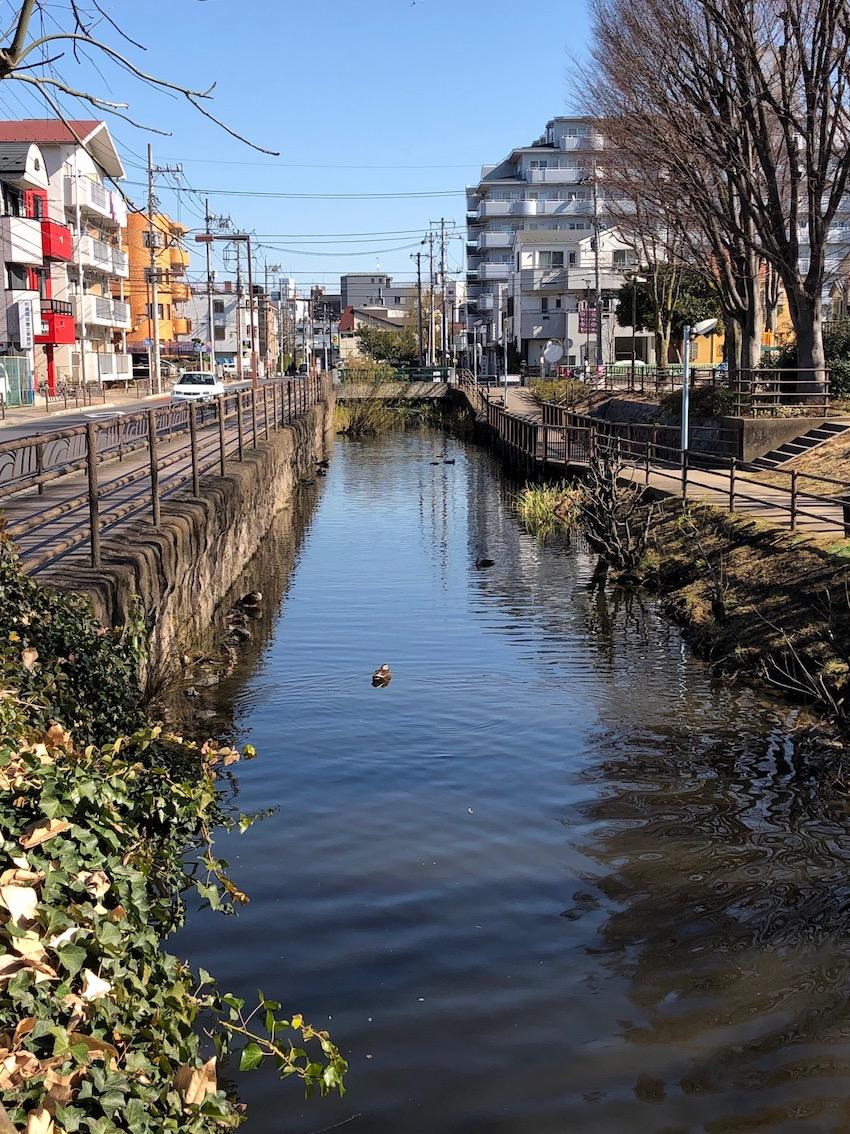[wienerhorn]
February 20, 2019 12:00

Tsukuda Island was built by fishermen invited Ieyasu Tokugawa to Edo from Tsukuda, Osaka. After that, Tsukuda Island also contributed to the construction of Tsukiji Honganji after the Great Fire of the Meiryaku era (1657), and Tsukuda Island occupies an important position in understanding the history of Chuo-ku. As one of the correspondents, I thought that I should keep my eyes on the roots of Tsukuda Island, so I went out on a business trip to Osaka and visited Tsukuda in Nishiyodogawa Ward.
From Umeda, take the Hanshin train at each station and get off at Chibune Station. Tamino Shrine is located in a corner of a quiet city. Although it is not a large precinct, when you step in, you can see that it is an important shrine loved by the area.

I heard that Ieyasu Tokugawa's Toshogu Shrine is on the grounds, but other places such as "Konpira Shrine" (Kompira-san), "Nana Shigeyuki-sha" (Ise-san), and "Inao-sha" (Inari-san) are enshrined.

Monument to "Tsukuda fishermen related to the land" closely related to Chuo-ku. There is also an explanation board that describes the relationship with Ieyasu and the origin of Sumiyoshi-jinja Shirine. There is also an explanation about the exchange between Tsukuda Elementary School in Osaka City and Tsukudajima Elementary School in Chuo City.

By the way, this area is located in the zero-meter area, and there was a sign next to the torii gate "-0.8m above sea level". It is located on a low-lying ground protected by the concrete dike. It was a journey that reminded us of the importance of the flood control disaster, while thinking about history.
[wienerhorn]
February 12, 2019 12:00
 The platform at Kachidoki Station on the Toei Oedo Line has been expanded and has been in service since February 11, 2019 (Monday).
The platform at Kachidoki Station on the Toei Oedo Line has been expanded and has been in service since February 11, 2019 (Monday).
According to the Tokyo Metropolitan Government's announcement, when it opened in 2000, the number of passengers per day was about 30,000, but it increased to about 100,000 in FY2017. In order to eliminate congestion caused by this, one new one in addition to the platform, which used to be one side and two lines, has become a two-sided two line separated by area. The newly established platform has become a dedicated platform for Daimon.
Improvement work of station facilities will continue in the future, and final completion is scheduled for the first quarter of 2020.
It would be nice to be able to ease commuting rush through the efforts of both businesses and users, including software measures such as staggered work.
[wienerhorn]
February 7, 2019 12:00
 The current Sumida River is downstream of the first-class river Arakawa, and is divided into the Arakawa Floodway at Iwabuchi near Akabane and pours into Tokyo Bay.
The current Sumida River is downstream of the first-class river Arakawa, and is divided into the Arakawa Floodway at Iwabuchi near Akabane and pours into Tokyo Bay.
However, the flow of the river before the Edo period was completely different from now. The Tone River, which now flows into the Pacific Ocean in Choshi, used to be a river that flows to Tokyo Bay. A part of the flow of the Tone River at that time is the water surface of the "Kosumida River" that currently remains at the border between Adachi-ku and Katsushika-ku.
Since Ieyasu Tokugawa entered Edo in 1590, large-scale river replacement work has been carried out. Due to the eastern transition of the Tone River, the separation of Arakawa and Tone Rivers, and the excavation of the straight waterway of the Ayase River, the "Kosumida River" is no longer the main channel.
Many of the waterways stretched around Chuo-ku were reclaimed by the reconstruction of the earthquake, the reconstruction of the war, the Tokyo Olympics, etc., but the water surface of the Ko Sumida River is still preserved as a valuable waterside space in the city. . It is located a few minutes' walk from Tokyo Metro Ayase Station. It is impossible to imagine from the current scenery that this was once a large river, but the thoughts and hardships of many engineers in the past who struggled to rule the river and create a city where people can live easily, I think it should be passed on to future generations.




 The platform at Kachidoki Station on the Toei Oedo Line has been expanded and has been in service since February 11, 2019 (Monday).
The platform at Kachidoki Station on the Toei Oedo Line has been expanded and has been in service since February 11, 2019 (Monday). The current Sumida River is downstream of the first-class river Arakawa, and is divided into the Arakawa Floodway at Iwabuchi near Akabane and pours into Tokyo Bay.
The current Sumida River is downstream of the first-class river Arakawa, and is divided into the Arakawa Floodway at Iwabuchi near Akabane and pours into Tokyo Bay.
